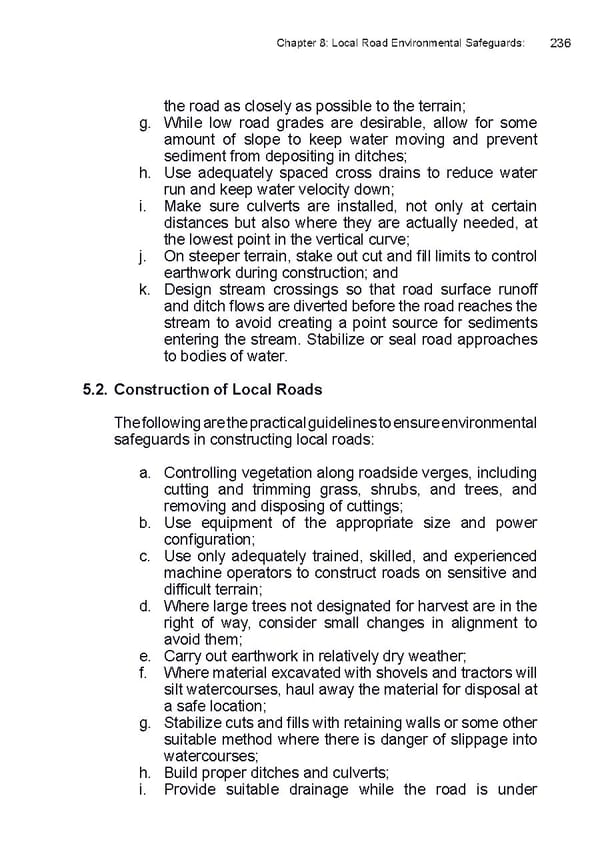Chapter 8: Local Road Environmental Safeguards: 236 the road as closely as possible to the terrain; g. While low road grades are desirable, allow for some amount of slope to keep water moving and prevent sediment from depositing in ditches; h. Use adequately spaced cross drains to reduce water run and keep water velocity down; i. Make sure culverts are installed, not only at certain distances but also where they are actually needed, at the lowest point in the vertical curve; j. On steeper terrain, stake out cut and ifll limits to control earthwork during construction; and k. Design stream crossings so that road surface runoff and ditch lfows are diverted before the road reaches the stream to avoid creating a point source for sediments entering the stream. Stabilize or seal road approaches to bodies of water. 5.2. Construction of Local Roads The following are the practical guidelines to ensure environmental safeguards in constructing local roads: a. Controlling vegetation along roadside verges, including cutting and trimming grass, shrubs, and trees, and removing and disposing of cuttings; b. Use equipment of the appropriate size and power conifguration; c. Use only adequately trained, skilled, and experienced machine operators to construct roads on sensitive and diiffcult terrain; d. Where large trees not designated for harvest are in the right of way, consider small changes in alignment to avoid them; e. Carry out earthwork in relatively dry weather; f. Where material excavated with shovels and tractors will silt watercourses, haul away the material for disposal at a safe location; g. Stabilize cuts and iflls with retaining walls or some other suitable method where there is danger of slippage into watercourses; h. Build proper ditches and culverts; i. Provide suitable drainage while the road is under
 LRM Manual CMGP Page 235 Page 237
LRM Manual CMGP Page 235 Page 237